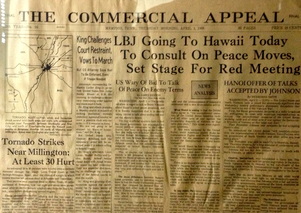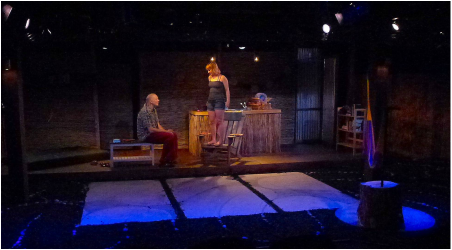First of all, the set is a bit of a chaotic mess. To the audience, Caroline is a typical teenager and therefore lives in a world of her own sense of "organization". In the design sense, this room is also a metaphor for Caroline's state of mind. The walls are a collection of her life as seen from her bedroom—all the places she wants to travel, people she wants to meet, and the every minutia of the world she wants to explore.
What is your favorite piece of the I and You set, and why?
Of course, my favorite is the walls. I have an idea where it's going to go, but at this moment it will evolve into its own being. I will let it lead me to find Caroline and the universe of her imagination. When you see it, you'll understand.
Did any aspect of the set change from your original plans?
No.
What questions did you ask yourself early on when designing a set?
This really can't be answered because I designed the show backwards from the end. Until you experience the final moments of this production, you really don't know the whats and whys. I can't reveal that to the audience. But again, you'll understand once you've had this impactful experience.
Why do you believe theatre is important?
Theatre is the study of human nature. Why do we do what we do and why it makes a difference. Theatre gives us all relatable scenarios and asks us to get involved and expose our humanness by admitting our character differences, our flaws, and our fears. Asking why theatre and the arts in general are important is better asked "why is air important". If I am to live, I must breathe. Ergo oxygen is important. If I am human, I must express my existence with others. Therefore, art is fundamentally 100% human expression. Theatre is art. Theatre is life. Theatre is like oxygen for us humanity.





